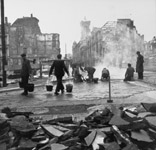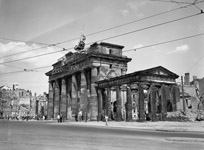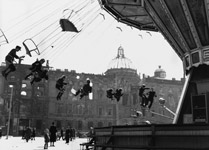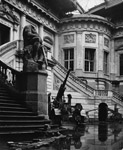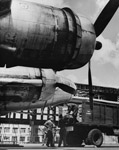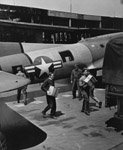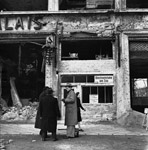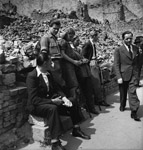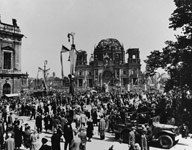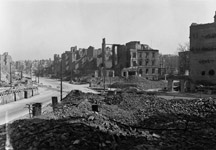


Introduction
Sixty years ago, when the Soviet occupying power closed off all the access roads through their zone to West Berlin, it was clear to the entire world that this was a visible expression of the end of allied cooperation in post-war Germany. The conflicts since 1945 had become too irreconcilable. The competition between the systems in East and West prevented the development of a common strategy for building a democratic society in Germany.
In the first five post-war years, international politics focused on Europe, Germany and especially Berlin. The Soviet Union’s attempt to force the Western allies to abandon Berlin by means of the blockade of the Western sectors failed. The Berlin Airlift became the impressive manifestation of the will of the Americans, British and French not to give up West Berlin.
The exhibition and the catalogue aim to recall the Berlin Blockade and the photographer Henry Ries, who as a Jew had to leave Germany in 1938 and went to America. From 1945 to 1951 he worked as a photojournalist in Europe, above all in his native city Berlin. In 2007 the German Historical Museum acquired his photographic legacy.
Berlin 1946
The Currency Reform of 1948
The three Western allied powers came to an agreement in 1948 to include the three German Western zones in the European recovery programme known as the Marshall Plan. The Soviet occupying power saw this as an affront and refused to let their zone participate in the Marshall Plan. On 18 June 1948 the Western powers announced the implementation of the currency reform in the Western zones and in West Berlin.
At first it was possible to exchange the old Reichsmarks at the exchange rate of 1:1 to the amount of 40 D-Marks. Wages, salaries and rent were re-evaluated at a ratio of 1:1, savings balances at the rate of 10:1. Retail price maintenance that had been in effect during the war and in the early post-war period was largely cancelled through the currency reform. On the following day the shops were already filled with goods. At the same time this led to a rapid increase in prices and a sharp rise in unemployment.
On 23 June 1948 the Soviet occupying power reacted with a currency reform of their own. The citizens in the Soviet zone immediately received the sum of 70 Marks.
Black Market
Rubble Landscapes
The German cities destroyed in the war shocked many noted photographers in the early post-war years. “German rubble photography” developed into a genre. Photos of ruins are usually empty of people and look apocalyptic. The eye is directed to the consequences of the power of destruction and the photos point in this way to the horrors of war. The pictures reflect the suffering of the civilian population and the loss of the cultural heritage. The photographs of the cityscapes in ruins and rubble silently lament the loss and destruction. They seldom pose the question of the causes of this damage, which originated in the German launch of the war in Europe in 1939.
Henry Ries repeatedly describes his dismay in the face of the destruction in Berlin and other German cities. Besides his “still lifes” of depopulated fields of rubble he frequently chose motifs with people who are organizing their survival amongst the ruins. His street scenes show how life continues among the rubble, show children playing, a street café in the sun, the shooting of a film before the ruins, a merry-go-round in front of the Berlin City Palace. In his portrait series of market vendors at Wittenbergplatz and travellers at Anhalter Bahnhof he gives the Germans an individual face.



